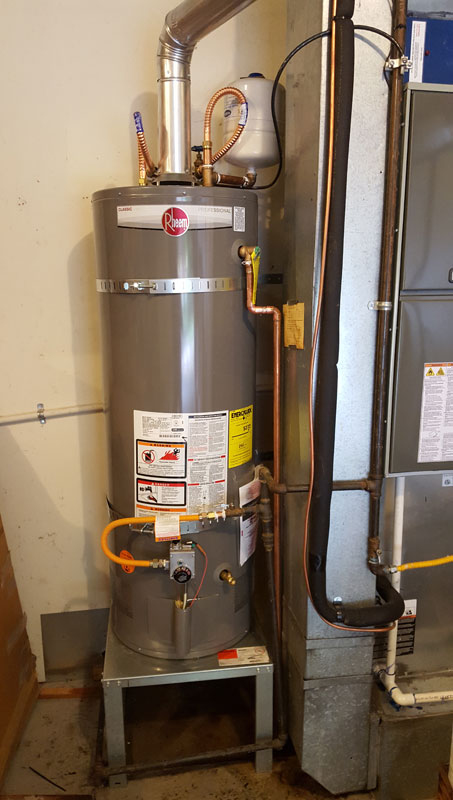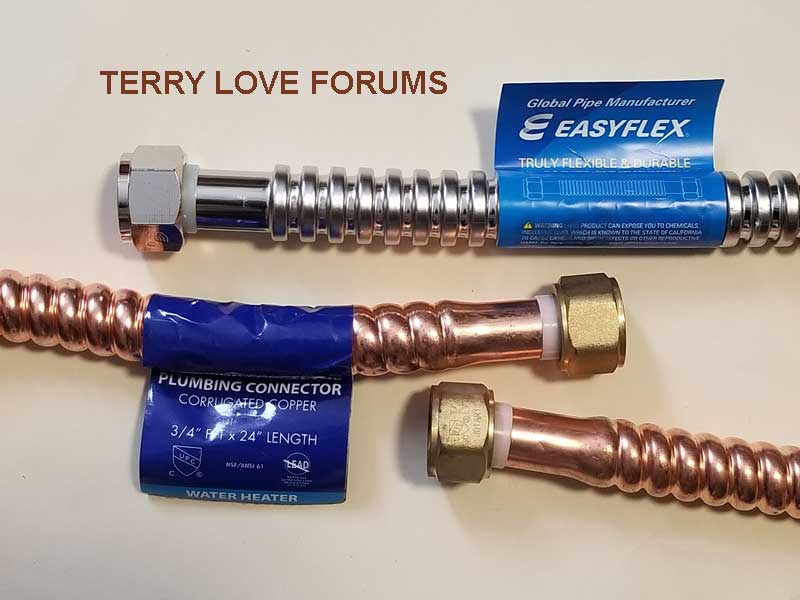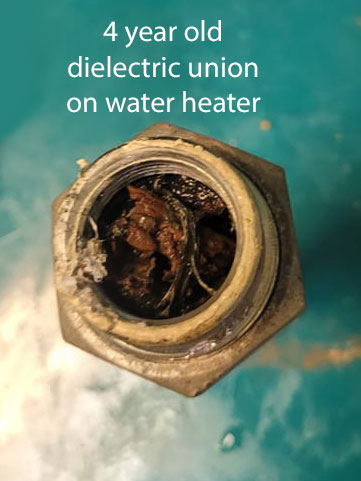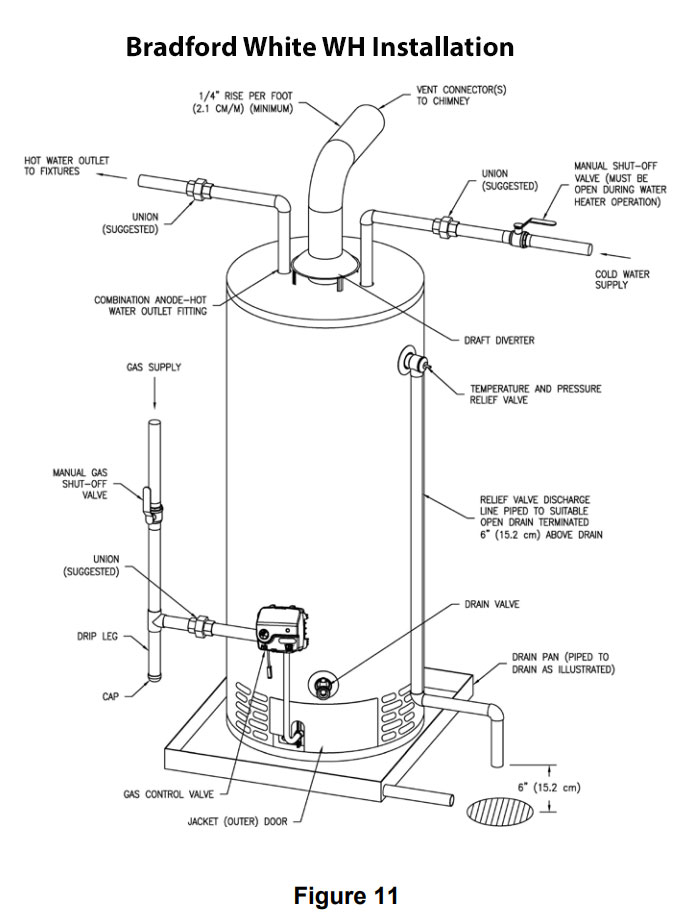Shopco
Member
14 years I installed the water heater using copper pipe (no flex line) to dielectric unions installed on the water heater.
When I attempted to replace the water heater the unions were welded together. They came away from the heater ok but would not disassemble as designed; I had to cut the copper pipe. Even when taking the unions to the bench vice there was no separating them. They were heavily corroded.
I am endeavoring to prevent a repeat of this situation and want comments on my plan, which is;
[copper pipe] to [dielectric union] to [12" neoprene hose with 316 stainless steel fittings] to [water heater].
What I want to know is if this will eliminate the corrosion on the dielectric unions.
When I attempted to replace the water heater the unions were welded together. They came away from the heater ok but would not disassemble as designed; I had to cut the copper pipe. Even when taking the unions to the bench vice there was no separating them. They were heavily corroded.
I am endeavoring to prevent a repeat of this situation and want comments on my plan, which is;
[copper pipe] to [dielectric union] to [12" neoprene hose with 316 stainless steel fittings] to [water heater].
What I want to know is if this will eliminate the corrosion on the dielectric unions.




